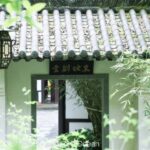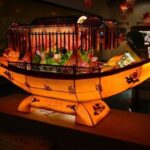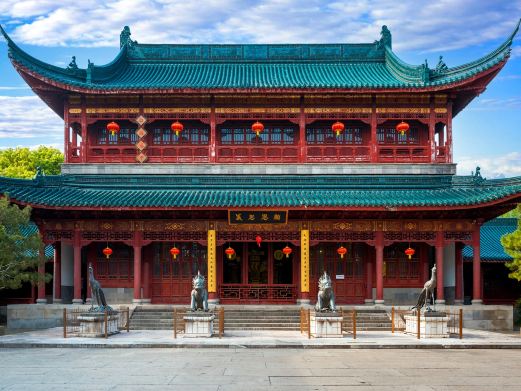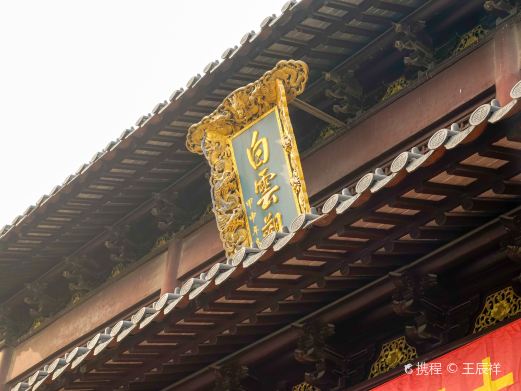The Jiaoshan Stele Forest, also known as Baomo Pavilion. It originated from Baomo Pavilion in 1048, the eighth year of Qingli in the Northern Song Dynasty. It is composed of cliff carvings and the stele forest exhibition hall. It is one of the four major stele forests in the country after the Xi’an Stele Forest. The Jiaoshan Stele Forest currently has more than 80 important cliff carvings and more than 400 steles in storage. Among them, the ‘Epitaph of Curing Cranes’ which is respected by calligraphers of all dynasties as the ‘ancestor of large characters’, the Tang Dynasty engraving of ‘Verse Sentences of the Diamond Sutra’, the Song Dynasty engraving of ‘Mi Fu’s Inscription and Carving’, ‘Lu You’s Viewing of the Epitaph of Curing Cranes in the Snow’, and the complete set of Qing Dynasty engravings of ‘Chengjian Hall Stone Carvings’ are all top-quality and extremely precious. Over the years, the Jiaoshan Stele Forest has been renowned for its exquisite steles, continuous cliff carvings and unique charming Jiangnan garden landscapes.
Baomo Pavilion: Baomo Pavilion was originally the site of Ziran Nunnery, Xianglin Nunnery, Yufeng Nunnery and Haiyun Nunnery. The stele forest contains more than 400 steles of past dynasties, including many calligraphy masterpieces of historical celebrities. Among them are Wang Xizhi’s ‘Preface to Breaking Evil Theory’ of the Eastern Jin Dynasty; Yan Zhenqing’s ‘Thirty Five-Character Poems on Duobao Pagoda’ of the Tang Dynasty; Mi Fu’s horizontal plaque of ‘City and Mountain Forest’ of the Song Dynasty; Huang Tingjian’s ‘Theory of Keeping Civets’; Su Dongpo’s ‘Postscript to Wen Tong’s Ink Bamboo’ and ‘Self-Inspection of Ink Bamboo’; two small regular script stone carvings by Zhao Ziang of the Yuan Dynasty; and seven pieces of ‘Returning Home’ written by Prince Cheng of the Qing Dynasty. All are masterpieces by famous artists and have their own characteristics.
The cliff carvings are distributed on the cliffs along the river, stretching more than 200 meters. There are inscriptions by famous poets of all dynasties for thousands of years. In terms of time, there are the Six Dynasties, Tang, Song, Yuan, Ming and Qing dynasties; in terms of fonts, there are various calligraphic styles such as regular script, cursive script, official script and seal script. The content is rich, just like a natural exhibition of ancient calligraphy. As the renowned ‘mountain of calligraphy at home and abroad’, there are Wang Xizhi’s ‘Preface to Breaking Evil Theory’ of the Eastern Jin Dynasty, the wonderful work of the early Tang Dynasty ‘Stele of Master Wei’, Yan Zhenqing’s ‘Thirty Five-Character Poems on Duobao Pagoda’ (a total of 30 poems and 44 pieces), Mi Fu’s horizontal plaque of ‘City and Mountain Forest’ of the Song Dynasty, Wen Zhengming’s ‘Epitaph of Mr. Qian and Wang’ of the Ming Dynasty, Prince Cheng’s ‘Returning Home’ of the Qing Dynasty and so on.
Opening hours: Open all year round from 08:00 to 17:00.
Must-see tips: From October 18th to 20th every year, Jiaoshan holds the International Calligraphy Festival.
Jiaoshan Stele Forest
The Jiaoshan Stele Forest, also known as Baomo Pavilion. It originated from Baomo Pavilion in 1048, [...]









